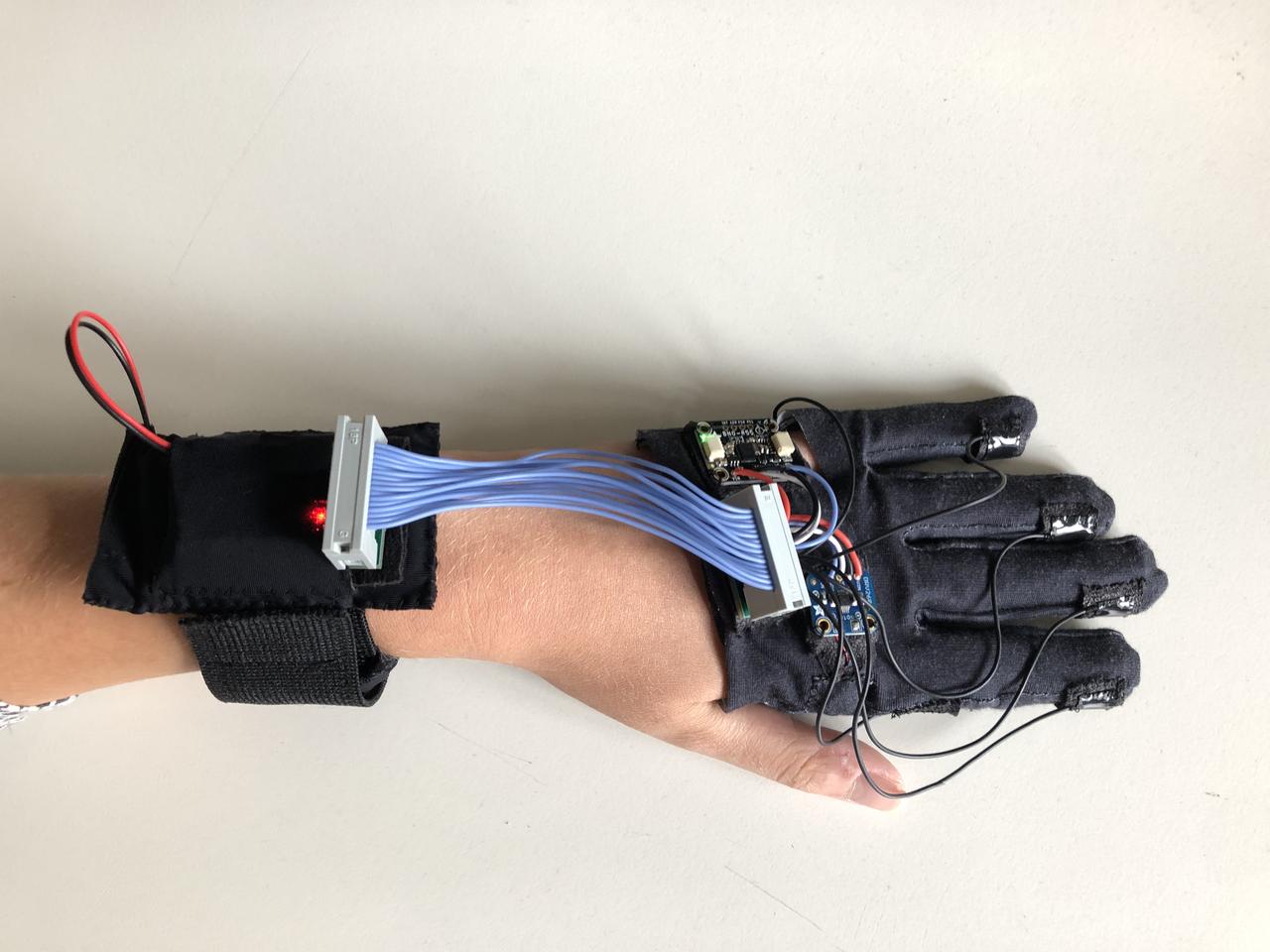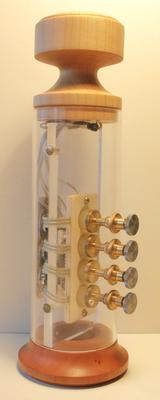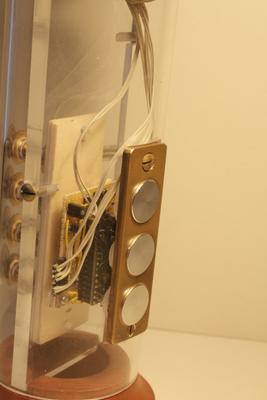Arduino & Co in Sound/Music Projects
The term physical computing describes the use of micro-controller-based solutions for connecting software processes to the physical world. Sensors for obtaining physical quantities and actuators for manipulating objects open up manifold applications in sound art and music. Due to the rise of low cost, easy to program development boards like the Arduino, creative projects have easy access to these possibilities, giving rise to a variety of individual interfaces, controllers and installation concepts.
The Arduino is the most popular and established platform. Other examples in the following sections are based on the Teensy Board or the ESP32, which are programmed in the same way as the Arduino.
Sensor-Based Projects
BinBong V1
The first version of the BinBong (von Coler et al, 2017) haptic musical interface, using MIDI via USB wired communication.
PS_Gloves
The PS_Gloves are a project by Paul Schuladen, developed between 2018 and 2023.

Actuators
Self-playing Guitar
Building a self-playing and tuning guitar in a student project in a 2011 class with Douglas Repetto at TU Berlin. These videos show only the isolated attempts at plucking the strings with selenoids and tuning them with servo motors:
Ton-Technik & Pot-Shot
In his installations Ton-Technik and Pot-Shot, Andre Bartetzki uses solenoids to excite clay pots. An Arduino Mega is used in combination with SuperCollider to trigger the selenoids in specific patterns:
References
2017
- Henrik von Coler, Gabriel Treindl, Hauke Egermann, and Stefan Weinzierl.
Development and evaluation of an interface with four-finger pitch selection.
In Proceedings of the 142nd Audio Engineering Society Convention. 2017.
[details] [BibTeX▼]


